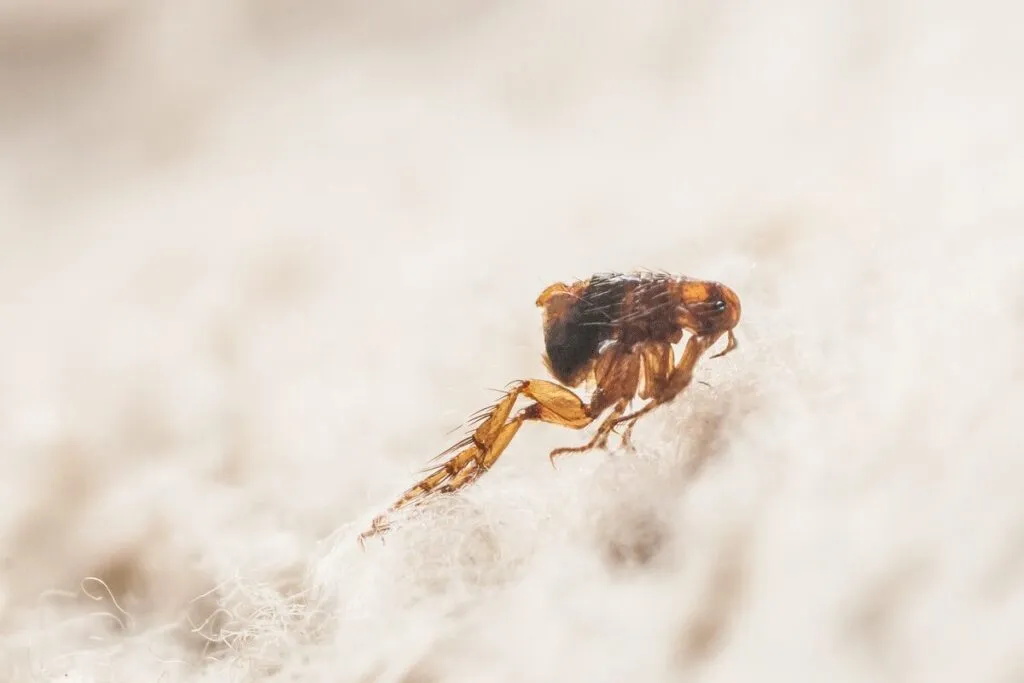The severity of flea saliva allergy symptoms can vary from dog to dog. However, the most common signs of the disease include mild to severe itching, causing affected dogs to scratch or bite at their skin. This can lead to self-harm, visible as crusts on the skin.
Eventually, the skin may thicken, or nodules may develop, particularly in breeds like the German Shepherd.
Hair loss (Alopecia) and increased skin pigmentation are also common consequences of a flea allergy.
Inflammations Are Inevitable
Due to the constant nibbling and licking of the affected skin areas, it usually doesn’t take long for bacterial infections to occur.
Vets also frequently observe an accompanying infection with skin fungi (Malassezia pachydermatis) in dogs with a flea saliva allergy.
The resulting skin inflammation (Flea Salivary Dermatitis) can even manifest as Hot Spots.
Which Skin Regions Are Particularly Affected?
Skin changes due to flea saliva allergy typically occur at certain body sites including:
- Belly
- Legs (thighs)
- Flanks
- Hip
- Back (especially the rear area)
- Base of the tail and upper tail portion
When Do the First Symptoms Appear?
Dogs can display symptoms of flea saliva allergy in different ways. Depending on the type of allergy, the first signs of illness appear at different times.
With Type 1 (Immediate Type), symptoms are noticeable within 15 to 20 minutes. In the case of Type 4 (Delayed Allergy), your dog may not show discomfort until one to two days later. There is also an intermediate form, where symptoms occur approximately three to eight hours after contacting flea saliva.
When Should I Visit the Vet?
Sometimes you as a dog owner can spot fleas in your dog’s fur and take appropriate measures (flea treatment and hygiene).
If symptoms do not improve after this or if your dog shows signs of illness without clear evidence of flea infestation, it is best to consult your veterinarian.
Warning of Anaphylactic Shock
If your dog reacts with severe allergic reactions such as anaphylactic shock, it is an emergency. Signs include unconsciousness, difficulty breathing, and severe vomiting. In this case, seek veterinary help as quickly as possible.
For tips in serious cases, see our guide on First Aid for Dogs

